Premier Daniel Andrews blasts ‘vile’ theories on first day back at work
Premier Daniel Andrews got testy in his first public appearance since March, slapping down speculation on what happened during the weekend of his back injury.
Victoria
Don't miss out on the headlines from Victoria. Followed categories will be added to My News.
Premier Daniel Andrews has made his first public appearance on his return to work in the state’s top job, more than 100 days after a nasty fall on the Mornington Peninsula.
He lashed the wild and unfounded rumours surrounding his injury, labelling them “vile”.
“People who make up their own facts, you’re best not really to get into an argument with them. It’s very difficult to win those arguments,” Mr Andrews said at a construction project press conference.
“People know me, they know my work, they know my background.
“They know that I love my family and I love my state.
“And I have spent four months doing rehab, not getting fit to get out, but getting fit and healthy to get back to work for the people of Victoria.”
The Premier also revealed further details on his back injury, saying he was not yet fully recovered.
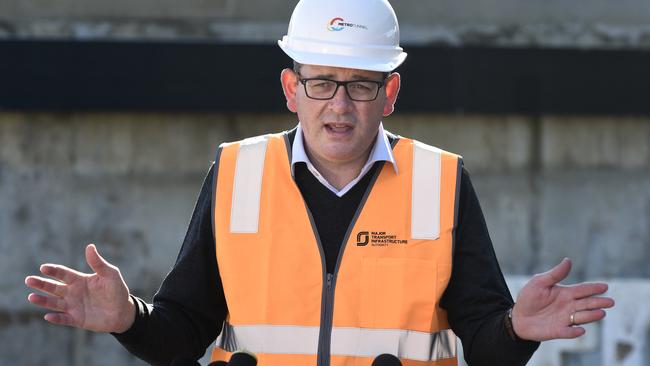
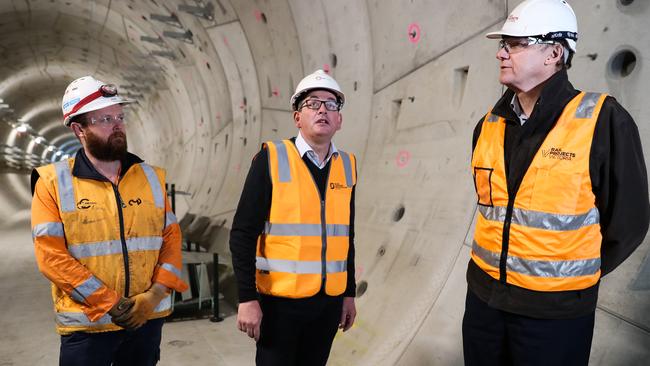
Although his spinal injuries have healed, there were still months of recovery ahead, he said.
“For instance, the doctors say ‘you can go and play golf, you can do all sorts of different things. You won’t re-injure that. You need to have another trauma – nothing you do will injure that’.
“As far as the ribs go, though, they’re not healed. They take another three months.”
Mr Andrews was fired up when repeatedly asked to address the rumours about his injury and whether he should have provided more clarity during his recovery.
“Like, really, if you’re asking me like I’m supposed to stand here and accept some responsibility, some personal responsibility, it’s my fault, is it? That people have been putting out some of this stuff? Seriously? Come on I don’t think that is fair and I don’t think that is accurate,” he said.
“You can have a debate about whether we should have done, rather than focus on getting well, we should have been doing a Hollywood production every week or every couple of weeks and then you would have all been asking, ‘If he’s well enough to do videos like that, why isn’t he back?’
“I accept there’s an element that you can’t win with these things. That’s fine that comes with this job, but what fed those rumours is nothing I have done. What fed those stories is the vile, wicked nature of the people who have put them around and what is more, the vile behaviour and conduct of those who have sought to turn them into a political weapon.”
He said he did not see anyone the night before he injured his back and described the getaway to the Mornington Peninsula as a “family weekend”.
“I’d not seen anyone, it had not been a late night, in the sense that I think you are inferring. It was just one of those things. You can be incredibly unlucky,” he said.

“The step was wet, as I said, I had a briefcase in one hand, an overnight bag in the other, I’d taken a couple of steps on the porch, then I’ve gone to step down on to the first step of only two steps, maybe three, it was only a short distance and instead of my foot planting on that step it simply slid off.
“People have more information, I dare say, on this particular incident than any similar incident at any point in Victorian history, I reckon, and I’m fine with that. If that gives people greater confidence that they know what happened, I can only tell you what happened, I can’t be expected to deal with every vile story that gets put out there, otherwise I’d probably do that and nothing else.”
Mr Andrews said the rumours also hurt his family, revealing his children had been affected.
“It is very, very hurtful when kids are being taunted at school,” he said.
“It is very hurtful when you see some of this stuff printed.
“And I’m not speaking for myself. I’m speaking on behalf of my family.
“Vile stories. And for people to try and turn that into a political weapon, well, I reckon they’ll be judged harshly for that, and I reckon they should be.”
Mr Andrews praised Acting Premier James Merlino for stepping up in his absence.
“I’ve never asked people to work harder than I do,” he said.
“These last four months have been a bit different ... I am blessed to lead a very strong team, a team of equals, a team of great depth, a team of great character and conviction for the state.
“I’m not surprised they did an outstanding job in my absence, but I’m very proud that they did that.”
Mr Andrews could not breathe and was turning blue, later suffering respiratory failure, after crushing his back in a horror fall in March.
The Premier and wife Cath feared he was “going to die” in the minutes after he slipped on wet steps at a Sorrento holiday home.
They again feared the worst as he was taken into intensive care and placed on breathing machines to support his collapsed lungs, with doctors concerned he could develop deadly pneumonia.
Returning to work on Monday, Mr Andrews revealed how close he came to paralysis.
“When a senior trauma doctor takes Cath aside, shows her a monitor ... and explains to her that ‘it’s 1mm and it’s a life-changing event, you should go and buy a Tattslotto ticket’, that’s enough to give you some perspective,” he said.
Business owners, who say they have been “crippled financially and emotionally”, have called on the Premier for more support as they struggle to recover from the state’s four lockdowns.
— Mr Andrews gave an exclusive interview to the Herald Sun on his injury and road to recovery — read it below.
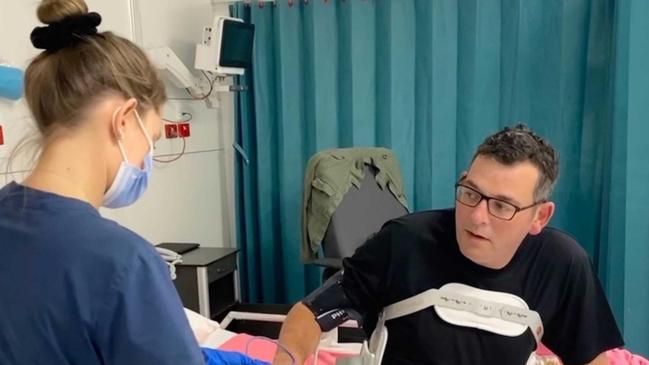
‘I THOUGHT: I’M IN TROUBLE’
“I’ve got a briefcase in one hand, I’ve got an overnight bag in the other and I walked out the front door.
“The door slams behind me, I take two steps on the porch … and as I put my left foot on the step it just slid straight off it.
“It’s like it is in slow motion. I thought ‘I am in trouble here’.
“I got airborne, bang, and then the leading edge of the porch hit me square across my shoulder blades. I could hear it, and it was not a pleasant sound.
“I couldn’t breathe in or out. I couldn’t scream, I couldn’t call out for Cath.
“It was one of those things where you know have done something significant, you worry you have done something that won’t heal, and that your life is going to change.”
It was still dark at 6.30am on March 9 as Victoria’s Premier lay flat on his back in the grass at the foot of three small wet steps.
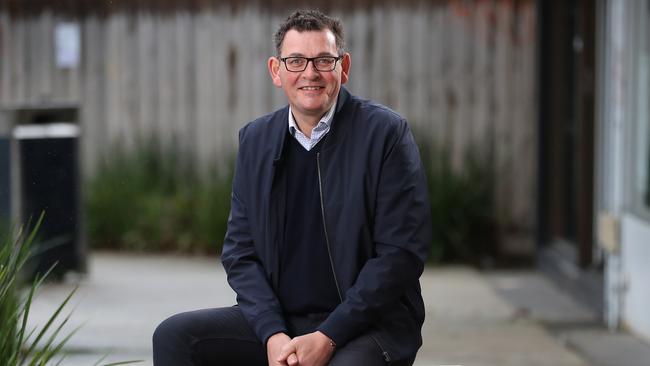
Inside the Sorrento home his family had booked for a short break, Daniel Andrews’ wife Cath and two of their three children, Grace, 16, and Joseph, 12, were trying to sleep.
Barely breathing and unable to move, Mr Andrews’ groaning grew loud enough to disturb Ms Andrews at the back of the house.
It was about five minutes since he fell, but for Mr Andrews it felt like an eternity until she found him.
“At that stage I had very, very shallow breath, I could just breathe in and out and make all sorts of weird noises. It was very painful, very real,” Mr Andrews said.
The Premier was “going blue” as his wife feared the worst.
“We were looking at each other and I was thinking ‘you’re going to die here in Sorrento at this holiday house’,” Ms Andrews said.
“You were looking at me,” she tells her husband now, “and you felt the same”.
Ms Andrews called an ambulance and then the Premier’s security detail.
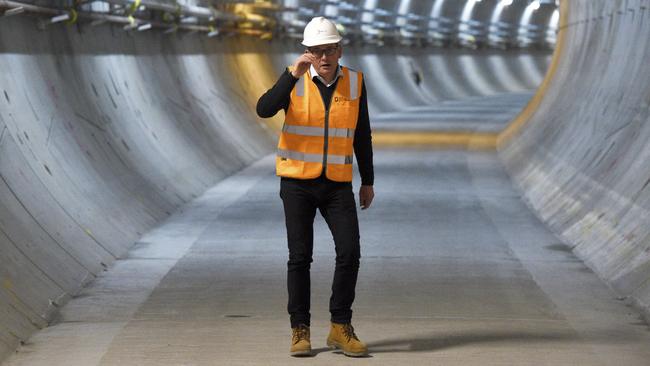
The two police officers had been staying in a house two doors away and were in their car preparing to escort Mr Andrews via his Mulgrave house to Healesville, where he was due to announce a landmark Indigenous truth and justice commission.
Instead, they were called on to lift the Premier off the grass and take him inside.
When paramedics arrived at 7.01am, Mr Andrews was in agony and still struggling to breathe. They placed a “green whistle” in his mouth and told him to suck in the strong pain killer Penthrox – but not to draw in too deeply or he’d worsen the pain from his obviously broken ribs.
Unable to move his arms, paramedics used scissors to cut off his favourite golf shirt so they could see his broken body. Moments later a tube was inserted into his arm so he could receive morphine to deaden the pain, allowing him to suck in more oxygen.
In consultation with the Premier and his family, the paramedics transferred him to Peninsula Private hospital, rather than drive to Melbourne and leave the area short of an ambulance.
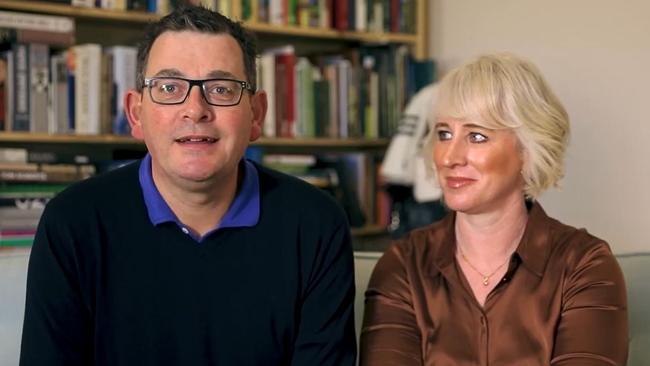
REALITY BITES
With their patient in immense pain, Peninsula Private doctors inserted an epidural in order to pump relief directly into the middle section of his spine to deaden its nerves.
By midmorning, a host of scans confirmed the simple fall on steps had caused complex injuries.
“It was at that point they could tell there was something broken,” Mr Andrews says.
“You could just get a sense from the mood and the tone of all the clinical staff that it wasn’t like ‘I have sprained my ankle’ – it was something more serious than that.”
Specialists at Victoria’s major trauma centre were called to discuss Mr Andrews’ case and it was clear the spinal fractures were so severe he needed a helicopter transfer to The Alfred hospital.
But the Premier refused the flight. Fearing any appearance of special treatment and not wanting to tie up lifesaving resources, he demanded a road ambulance.
The decision annoyed the trauma specialists and proved extremely painful.
It made it impossible to continue the epidural, which was blocking his agony. And diversions set up while night roadworks were being done on Monash Freeway resulted in a trip lasting more than an hour.
WHAT’S GOING ON?
Just after 10pm, Mr Andrews was placed in a cubicle in The Alfred emergency department as trauma specialists began testing his oxygen levels, growing increasingly worried.
“There was a gaggle of doctors around and I could only see their eyes because they all had masks on,” Mr Andrews said.
“I knew half of them. They were all in a sort of horseshoe around me and while I couldn’t see their faces I could see their eyes and they all looked very worried.
“I thought ‘shit, OK, what’s going on here’.”
For director of trauma services Professor Mark Fitzgerald it was obvious Mr Andrews had severe spinal damage and broken ribs. But his immediate concern was the state of his lungs and lack of oxygen. The horror road trip had taken its toll and Mr Andrews was hovering on the need for ventilation and intubation, so he was rushed into the intensive care unit.
“He was in a bit of trouble,” Prof Fitzgerald said.
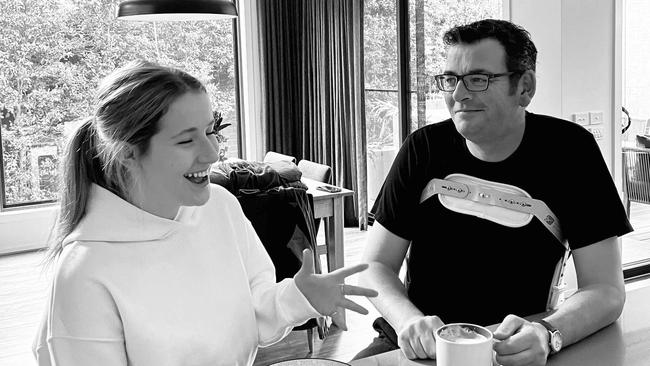
“By the time he got here he was in respiratory failure. It was more than just a simple injury.”
Also assessing Mr Andrews was spine and orthopaedic surgeon Ali Humadi, who was concerned to find the Premier’s T7 vertebra had been “pancaked”. The bone had not only collapsed to half its size, but had been jolted out of position causing a bulge in Mr Andrews’ back that was impinging on his spinal cord.
Six ribs were fractured and those lowest in his spine – connected to the T10 and T11 vertebrae – caused the lower sections of Mr Andrews’ lungs to collapse.
While he was relieved to find Mr Andrews had feeling in his legs, Mr Humadi had to leave further assessment while attention focused on breathing machines and fixing his chest.
“He was a bit stressed because of the respiratory failure and the difficulty in breathing. But the nerves were working OK and everything was stable,” Mr Humadi said.
“So we got him into the ICU and they did a great job restoring his respiration.”
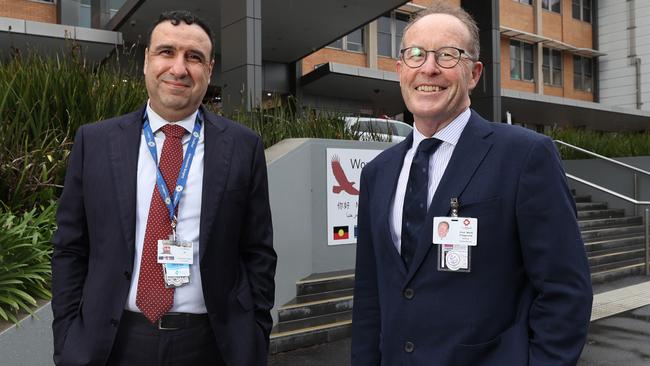
INTENSIVE CARE
Mr Andrews’ fears grew as he was wheeled past a plaque with his name on it, knowing he was entering the world-leading intensive care unit he opened years earlier for the sickest of the sick.
Intensive care specialist Prof Andrew Udy was also concerned. Prolonged periods without deep breathing can cause build up of fluid in collapsed lungs, leading to deadly pneumonia, infections or other complications.
“He had some major fractures and it was really the location of those injuries which started to concern us because he had fractures of the spine and also his ribs,” Prof Udy said.
While he narrowly escaped the need for intubation that would also have triggered surgery, Mr Andrews was placed on breathing machines for two days to provide oxygen.
Even more crucial was balancing the pain relief. Too many painkilling narcotics would make the patient too sleepy to breathe adequately. Too few and he wouldn’t be able to inflate his lungs.
As the medics discussed plans to save the Premier and debated if and when they should operate on his spine, the grim reality sunk in.
“When a senior trauma doctor takes Cath aside, shows her a monitor with all the scans on it, and explains to her that ‘it’s 1mm and it’s a life-changing event, you should go and buy a Tattslotto ticket’, that’s enough to give you some perspective,” Mr Andrews said.

Spinal treatments once demanded a patient remain perfectly still for weeks, but it is now known that patients in Mr Andrews’ condition are able to breathe more effectively upright. So on his second day in intensive care the orthopaedics team and trauma physiotherapist Lara Kimmel fitted a brace to allow Mr Andrews to be upright without his spine collapsing further.
“By the second and third day he was walking outside of his own cubicle in ICU and therefore able to see the workings of ICU from the inside, which can be quite a daunting experience,” Ms Kimmel said.
While being able to walk was a relief for Mr Andrews, seeing other patients fighting for life was more than sobering. “There’s no underestimating that it was a very serious injury, and they were taking it very seriously and they were very worried,” he said.
“And so was I.”
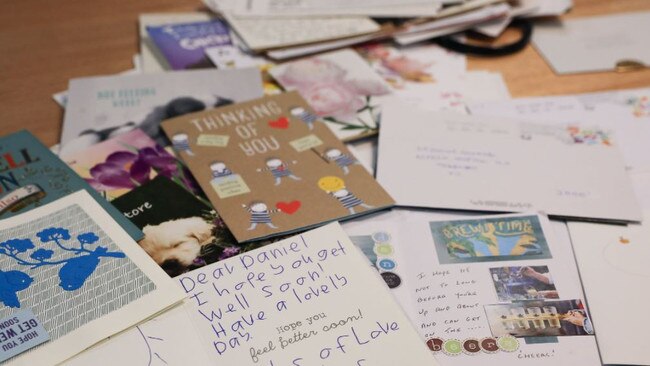
TOUGH DECISIONS
As attention focused on Mr Andrews’ lungs, Prof Fitzgerald and Mr Humadi led several team meetings debating what to do about his spine.
Enclosed in the brace, Mr Andrews was now able to stand for an X-ray, giving the surgeons a clearer picture.
The results were reassuring, showing the T7 fracture was not moving or worsening.
But scans confirmed it was a severe “two column” break, meaning the first two-thirds of the spinal bone were shattered and only its rear section was intact. It left the medics with a difficult decision.
Surgery could not repair the shattered T7, so the best they could do was place screws in the two vertebrae above and below it to connect pins and build scaffolding to hold the broken section in place.
Such risky surgery is avoided if at all possible, with doctors preferring a patient to wear a brace while their body gains enough strength to support their back through months of rehabilitation.
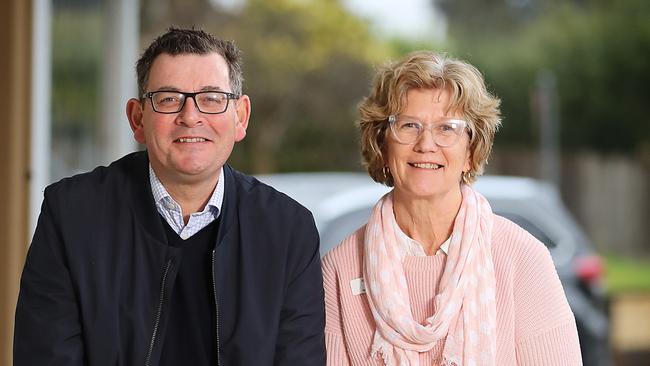
But it would be months before it was even known if Mr Andrews’ body could heal and his doctors feared he was not in a position to focus 100 per cent on rehabilitation.
“He was under a lot of other pressures. We weren’t under any of those pressures, so you have to be clear for people what the pathway is,” Prof Fitzgerald said. “The advantage was that he was improving and so we could afford to wait and see if there was any further deterioration.”
As the debate continued, the vertebrae in Mr Andrews’ spine began to get “sticky” and started fusing together, raising hopes his body would heal on its own, provided he remained still for three months.
“You just have to submit to it. You just have to say ‘Righto, I am not well, these people know what they are doing’ (and) do exactly as you are told,” Mr Andrews said.
“When you’re used to being the chair of the board, the boss and all of that, it is not easy to find yourself in a very vulnerable position and find yourself having to do what you are told on all issues.”

ON THE UP
Out of immediate danger, Mr Andrews was transferred from ICU to The Alfred’s trauma ward 5 West on March 13.
He did intensive therapy for up to three-and-a-half hours a day to enable him to get in and out of bed on his own, put his brace on, walk more than 50m and climb stairs.
“There is nothing better than when they say ‘You can come out of ICU now and you can go on the ward’,” he said.
“You can see in really practical, tangible terms, that you are making progress.”
Mr Andrews returned home to his family on March 15, but he didn’t do so alone.
For the first 10 days, a stream of doctors, physiotherapists, occupational therapists and nurses visited to provide treatment under the Better at Home program.
Nurse Julie Preston continued her daily visits for weeks, overseeing his rehabilitation, opioids to treat his pain, and drawing blood for ongoing tests.
“Telling him what to do was fine by me. I didn’t hesitate,” Ms Preston said.
The mental and emotional scars also took their toll.
“For a month or two afterwards I kept replaying it in my head. I kept seeing myself falling. It is really scary,” he said.
Six weeks later, Mr Andrews returned to The Alfred for more X-rays and a meeting with his medical team to decide if he still needed surgery.
“That was probably the most nervous I had been,” he said. “Is it doing what we needed it to do, is it healing?”
Ten minutes after the X-rays were taken, there was good news.
Firstly, there was no fluid in the Premier’s lungs. Secondly, his ribs and bones were on the mend and his core strength was on the right path to support his spine without pins.
“It was great to see him recover. That is why we do the work,” Prof Fitzgerald said.
Another six weeks later, on June 9, scans convinced the surgeons Mr Andrews’ body was strong enough for his brace to be removed, signalling for the first time he would be able to return to work at the end of the month




